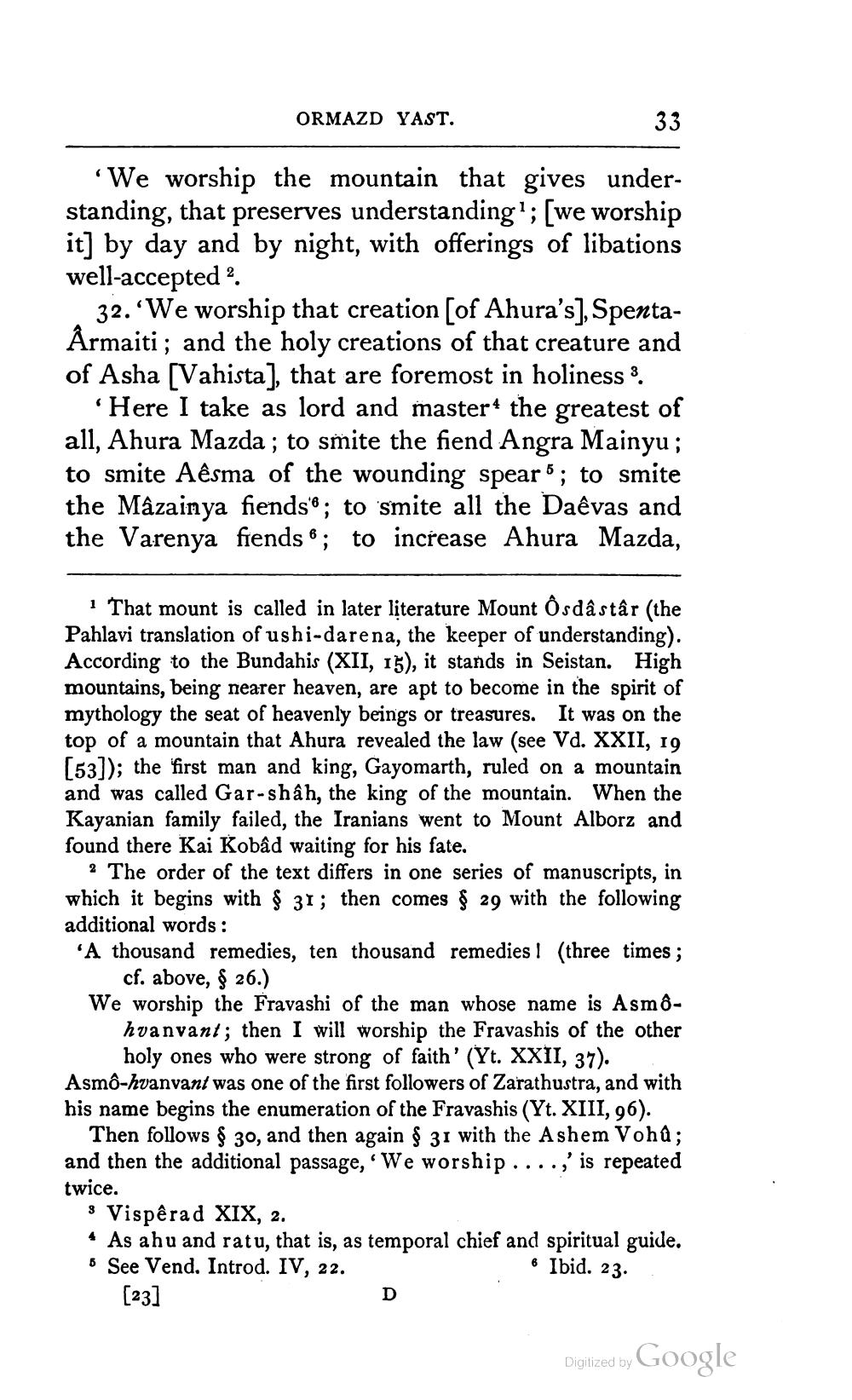________________
ORMAZD YAST.
33
“We worship the mountain that gives understanding, that preserves understanding?; [we worship it] by day and by night, with offerings of libations well-accepted ?
32. “We worship that creation (of Ahura's], SpentaÅrmaiti; and the holy creations of that creature and of Asha [Vahista), that are foremost in holiness 3.
Here I take as lord and master the greatest of all, Ahura Mazda ; to smite the fiend Angra Mainyu; to smite Aêsma of the wounding spear 5; to smite the Mâzainya fiendse; to smite all the Daêvas and the Varenya fiends e; to increase Ahura Mazda,
1 That mount is called in later literature Mount Ôsdâ stâr (the Pahlavi translation of ushi-darena, the keeper of understanding). According to the Bundahis (XII, 15), it stands in Seistan. High mountains, being nearer heaven, are apt to become in the spirit of mythology the seat of heavenly beings or treasures. It was on the top of a mountain that Ahura revealed the law (see Vd. XXII, 19 [53]); the first man and king, Gayomarth, ruled on a mountain and was called Gar-shah, the king of the mountain. When the Kayanian family failed, the Iranians went to Mount Alborz and found there Kai Kobâd waiting for his fate.
? The order of the text differs in one series of manuscripts, in which it begins with § 31; then comes § 29 with the following additional words: A thousand remedies, ten thousand remedies! (three times;
cf. above, $ 26.) We worship the Fravashi of the man whose name is Asmô
hvanvant; then I will worship the Fravashis of the other
holy ones who were strong of faith' (Yt. XXII, 37). Asmô-hvanvant was one of the first followers of Zarathustra, and with his name begins the enumeration of the Fravashis (Yt. XIII, 96).
Then follows $ 30, and then again § 31 with the Ashem Vohû; and then the additional passage, 'We worship....,' is repeated twice.
3 Vispêrad XIX, 2. * As a hu and ratu, that is, as temporal chief and spiritual guide. o See Vend. Introd. IV, 22.
6 Ibid. 23. [23]
Digitized by Google




